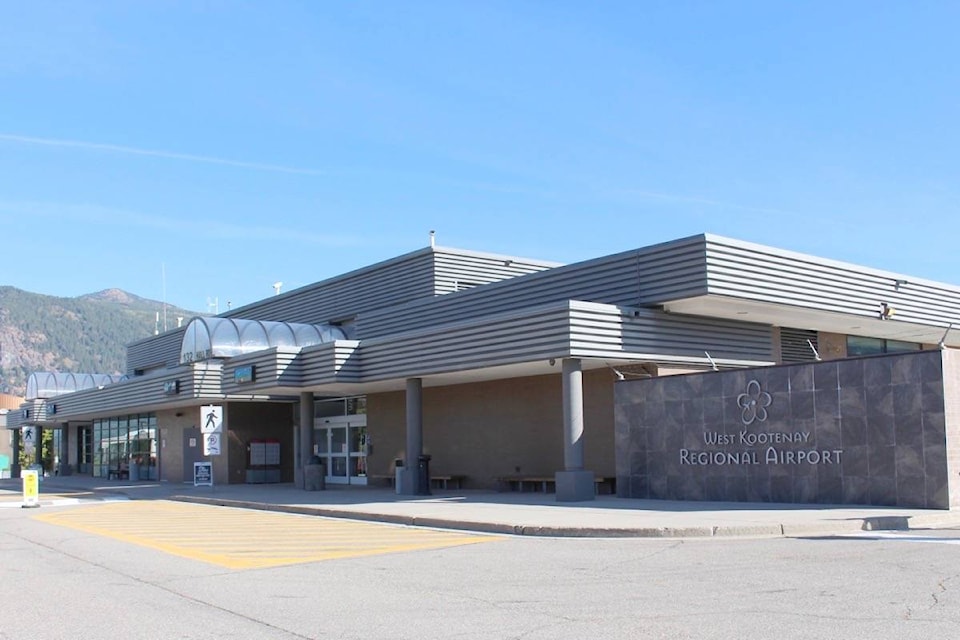There’s a well-trod myth that when you get to prison, you oughta pick a fight with the hardest convict you meet, thus securing your reputation as someone not to be messed with.
Winning the fight is not the point. In fact, were the advice true, winning the fight would be all downside, for you would now be the new tough wearing the target.
Regardless, it’s nonsense and no one with any knowledge of prison politics will offer it honestly. Still, the spirit of the thing holds: In any new endeavour or hard turn of luck, go in swinging.
Castlegar Mayor Bruno Tassone has seemingly taken the lesson to heart, choosing the West Kootenay Regional Airport, and its many reliability issues, as his main dance partner for the next four years. As tone-setters go, it’s a Goliath.
RELATED: Castlegar airport reliability upgrade ‘at a standstill’
And it’s a fight he can’t win, given the limited powers of mayorship to compel a multinational airline, in this case Air Canada, to scrap its aging fleet of Dash 8 propeller airplanes in favour of aircraft with modern low-visibility guidance systems. Failing that, wooing a competitor to move in is no less an uphill battle.
Of course, he could try to change the weather.
So formidable is the fight that it has almost no political downside for anyone to pick it. Who, after all, would blame David were he simply crushed like a bug under Goliath’s foot?
As mayor, Tassone could certainly — and should — make a big noise about the staggeringly poor success rate of flights in and out of the region (the airport’s reliability issue having earned our little valley hub the well-deserved moniker “Cancelgar”).
In a one-week period last December, 55 of 56 flights were cancelled due to fog and low cloud ceilings. The previous January, nearly two-thirds of all flights in and out were grounded.
With a typical cancellation rate hovering around 50 per cent during the winter months, it’s perhaps a kindness to call West Kootenay Regional an airport at all. Plane station, perhaps? A “sometimes airport” and otherwise decent borscht restaurant, despite the high security and extortionate entry fees?
I wish Tassone all the luck in bending the ears of those who can finally usher in an era of reliable air travel in the West Kootenay. He’ll need it.
Back in November, one of our reporters contacted Transport Canada for an update on the reliability issue. Surprisingly, the ministry spokesperson was unversed in the problem. In fact, she was unaware of Castlegar, period. Couldn’t spell it, couldn’t place it on a map.
RELATED: Castlegar mayor looks to 2019
There’s a small cadre of Kootenay residents who want the region to remain an inland island unto itself — hard to get to and hard to leave. I get it. Between planes that can’t land or leave and winter highways that regularly close so the military can blast artillery into mountainside avalanche zones, the area boasts a unique travel experience: Nature still rules here, your plans be damned.
But at some point, we’re leaving money — and our sanity — on the table.
Outdoor recreation is a big economic and cultural driver in the Kootenays. But check out some backcountry adventure guides or winter resort websites and under the ‘How To Get Here’ headers you’re likely to find warnings about avoiding the Castlegar airport at all costs. Most recommend flying to either Spokane or Kelowna instead.
It’s sound advice and many of us who live here already follow it. Yet many of us also earn incomes well below the national average and pay living costs well above. And so missing an extra day or two or three of work or holidays because we’re hostage to a flight navigation problem that was solved everywhere else decades ago bears a real cost.
Castegar spent hundreds of thousands of dollars last year on a study that proposes viable solutions to fix the airport’s navigation issues once and for all, should Transport Canada, Air Canada and Nav Canada finally adopt them.
In the meantime, many of our lives remain in a holding pattern.
